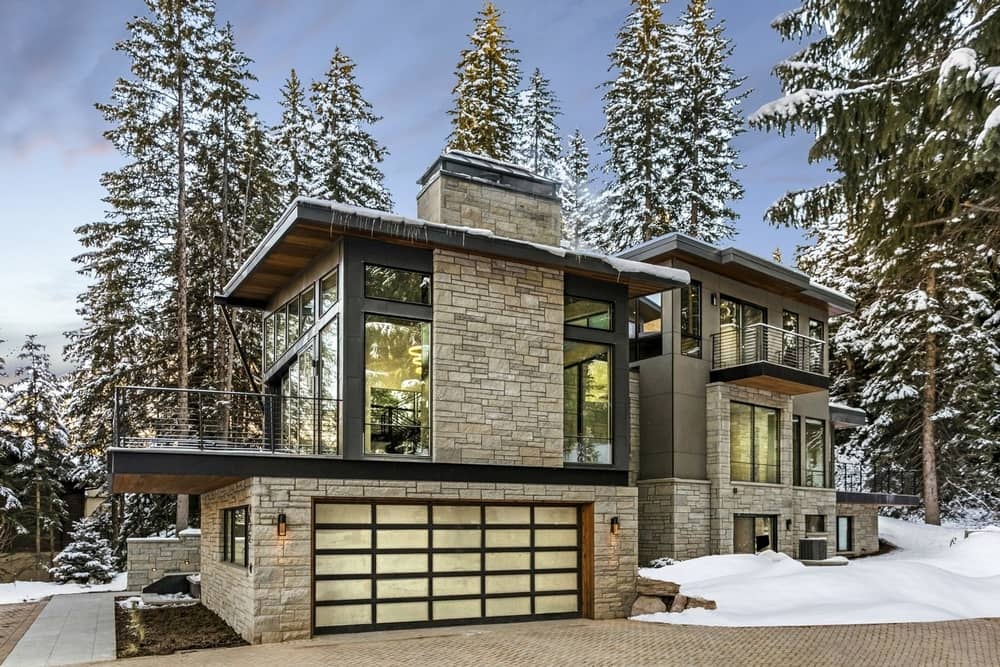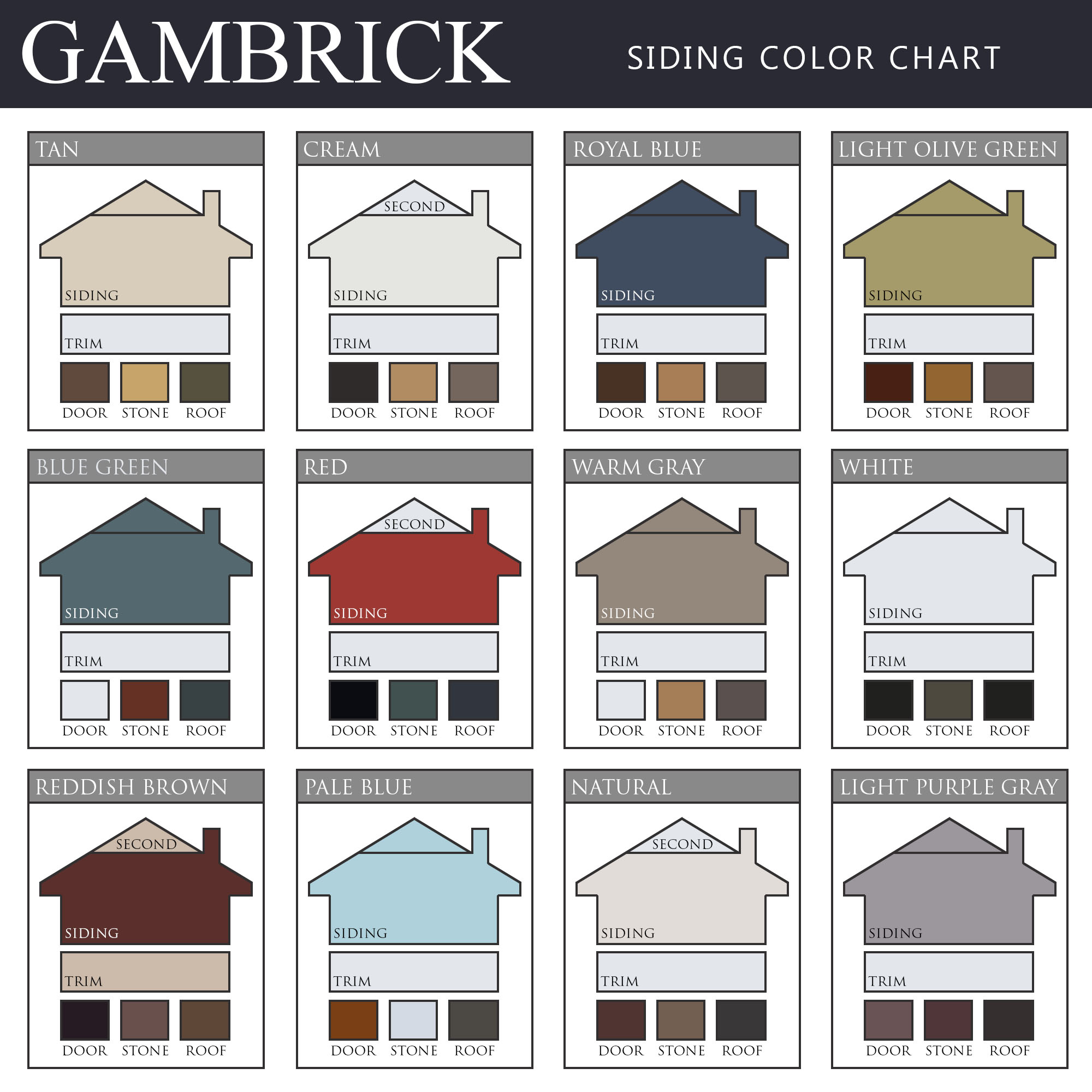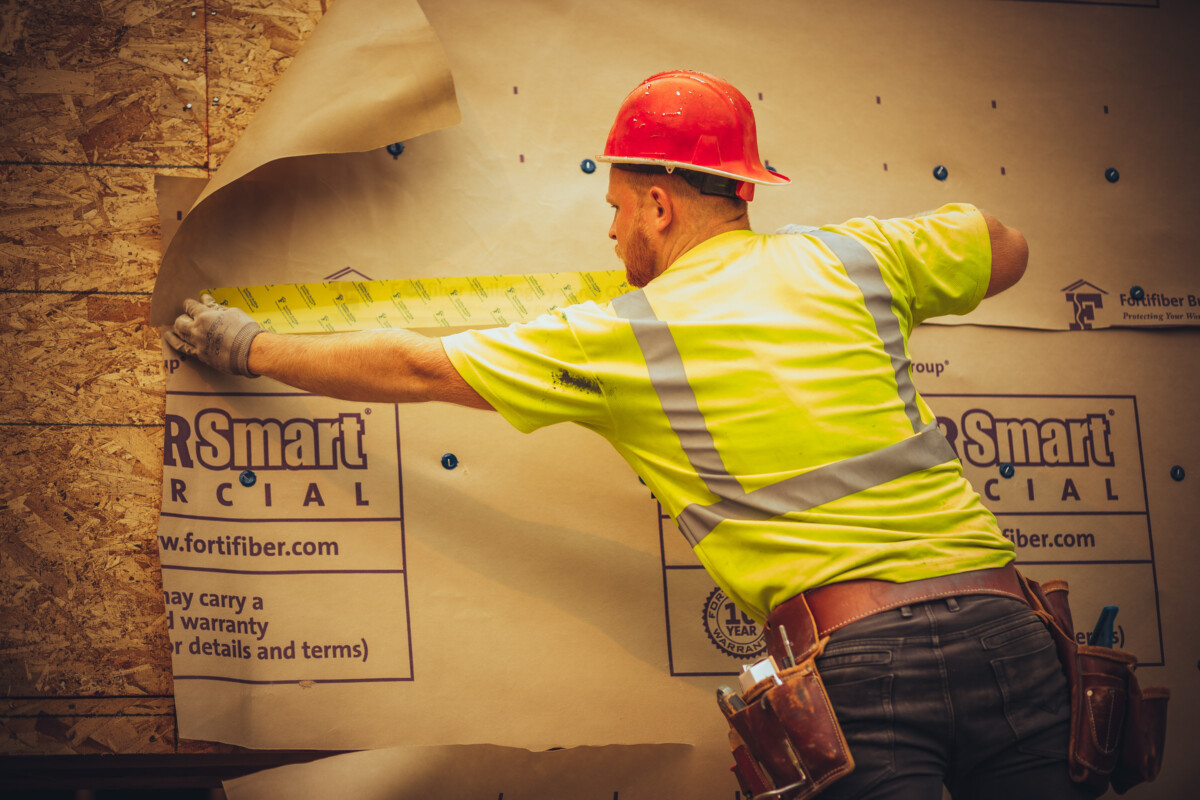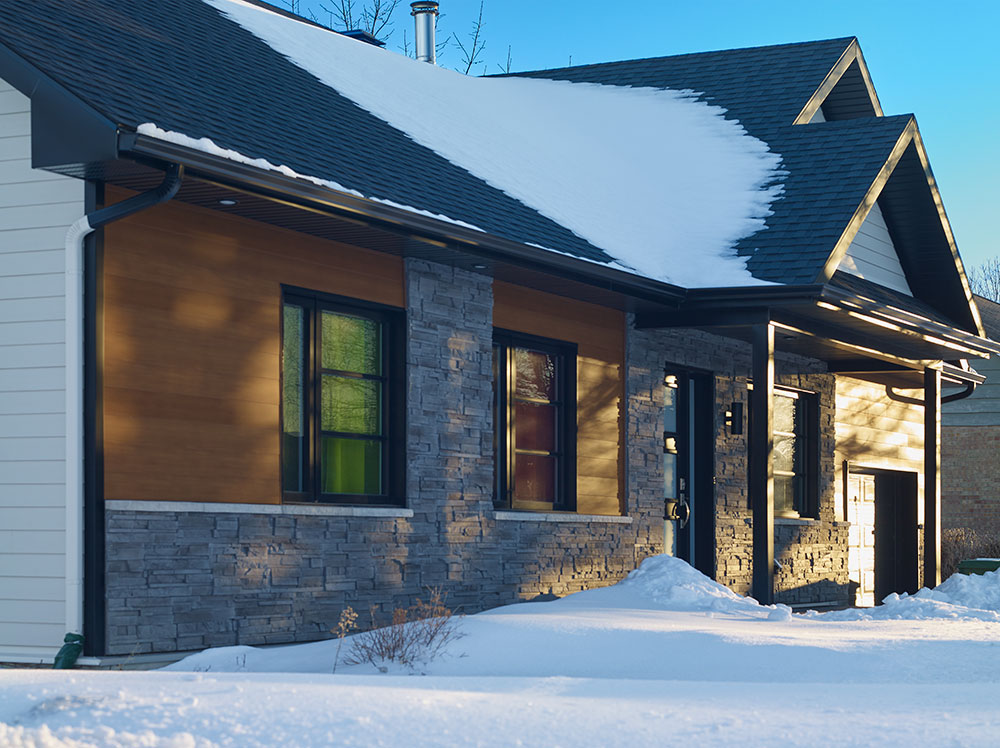Best Siding Options for Maximum Home Resale Value
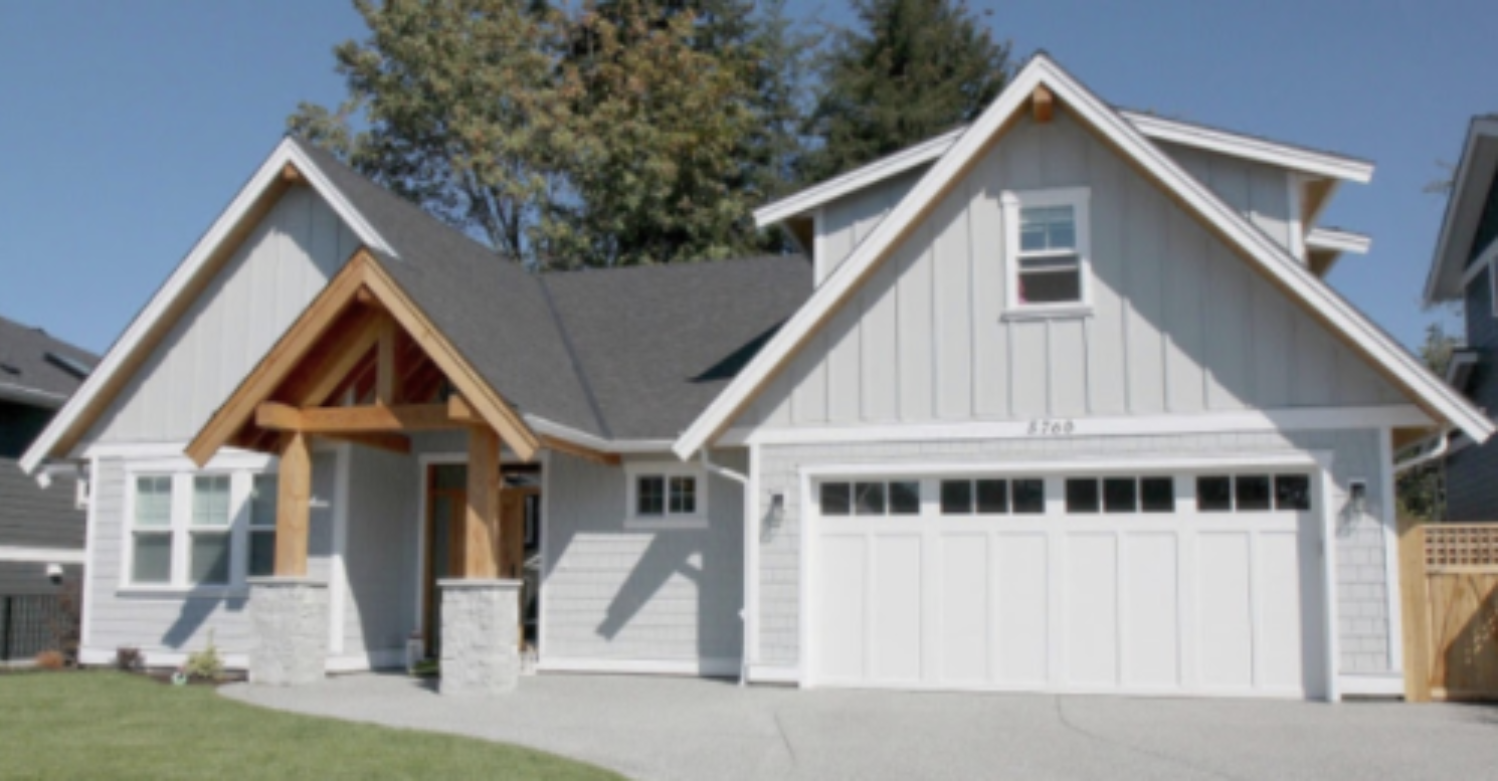
Best Siding Options for Maximum Home Resale Value: Choosing the right siding can significantly impact your home’s curb appeal and ultimately, its resale value. This isn’t just about initial cost; long-term durability, maintenance requirements, and aesthetic appeal all play crucial roles. We’ll explore popular siding materials – fiber cement, vinyl, wood, and metal – weighing their pros and cons to help you make an informed decision that maximizes your return on investment.
This guide delves into the specifics of each material, comparing cost-effectiveness, durability, and aesthetic versatility. We’ll also examine the influence of siding color on buyer perceptions and the importance of professional installation. Understanding these factors will empower you to choose the siding that best complements your home’s style while enhancing its market value.
Introduction
Defining “best” siding for maximizing home resale value requires a nuanced approach that extends beyond the initial purchase price. While cost is a factor, the true measure of “best” lies in the siding’s ability to enhance curb appeal, increase perceived value, and withstand the test of time, minimizing future maintenance and replacement costs. A visually appealing and durable exterior significantly contributes to a higher asking price and faster sale times. Key characteristics influencing a home’s market value include the siding’s color, style, material, condition, and overall aesthetic integration with the home’s architectural design.
The key characteristics that significantly impact a home’s curb appeal and perceived value are its durability, aesthetic appeal, and low-maintenance nature. Durability ensures the siding will withstand the elements for many years, minimizing the need for frequent repairs or replacements. Aesthetic appeal encompasses factors like color, texture, and style, ensuring the siding complements the home’s architecture and enhances its overall visual appeal. Low-maintenance siding reduces long-term costs and homeowner hassle, making it a more attractive feature for potential buyers. A home with well-maintained, attractive siding projects an image of care and quality, leading to a higher perceived value.
Common Residential Siding Materials
Several materials are commonly used for residential siding, each offering a unique combination of cost, durability, and aesthetic appeal. Understanding the strengths and weaknesses of each material is crucial for making an informed decision that aligns with both budget and long-term resale value goals.
- Vinyl Siding: Known for its affordability and low maintenance, vinyl siding is a popular choice. It comes in a variety of colors and styles, mimicking the look of wood or other materials. However, it can be susceptible to damage from severe weather and may not be as durable as other options. Its relatively low cost, however, often makes it a favorable choice for budget-conscious homeowners.
- Fiber Cement Siding: Offering superior durability and fire resistance, fiber cement siding is a more expensive option than vinyl but provides excellent long-term value. Its ability to withstand harsh weather conditions and its low maintenance requirements make it a desirable feature for potential buyers. It can mimic the look of wood or stucco, providing versatility in design.
- Wood Siding: Traditional wood siding offers a classic, natural aesthetic. However, it requires significant maintenance, including regular painting or staining, to prevent rot and insect damage. While aesthetically pleasing, its higher maintenance costs and susceptibility to damage can offset its initial charm in the long run, affecting its value proposition for resale.
- Metal Siding: Metal siding, often made of aluminum or steel, is extremely durable and resistant to fire, insects, and rot. It’s a low-maintenance option but can be more expensive than vinyl or wood. Its modern aesthetic is becoming increasingly popular, particularly in contemporary home designs. The longevity and low maintenance significantly contribute to long-term value.
- Brick Siding: While technically veneer, brick siding offers exceptional durability and curb appeal. It is a high-cost option but provides significant long-term value due to its longevity and low maintenance. The classic and timeless aesthetic of brick consistently holds its value in the real estate market.
Fiber Cement Siding
Fiber cement siding offers a compelling blend of durability, aesthetics, and cost-effectiveness, making it a strong contender for homeowners seeking to maximize their home’s resale value. Its composition, typically a mixture of cement, cellulose fibers, and sand, results in a remarkably resilient and low-maintenance exterior cladding.
Fiber cement siding’s longevity significantly contributes to its value proposition. Its resistance to rot, insect infestation, and fire damage minimizes the need for frequent repairs and replacements, a significant advantage over other materials prone to deterioration. This inherent durability translates to lower long-term maintenance costs and increased property value.
Cost-Effectiveness of Fiber Cement Siding
While the initial cost of fiber cement siding might be higher than some alternatives like vinyl, its extended lifespan and minimal maintenance requirements lead to significant cost savings over the home’s lifetime. Consider a scenario where vinyl siding needs replacement every 15-20 years due to fading, warping, or damage, incurring substantial replacement costs. Fiber cement siding, with a lifespan often exceeding 50 years, significantly reduces these recurring expenses. This long-term cost-effectiveness becomes particularly advantageous when factoring in the increased resale value associated with a well-maintained, durable exterior. For example, a home with newly installed fiber cement siding might command a higher sale price than a comparable home with older, deteriorating vinyl siding, offsetting the initial higher investment.
Aesthetic Enhancement with Fiber Cement Siding
Fiber cement siding offers a wide range of styles and finishes, allowing homeowners to achieve a variety of aesthetic looks. It can mimic the appearance of wood clapboard, shingles, or even stone, providing design flexibility to complement any architectural style. For instance, a home with traditional architecture could benefit from fiber cement siding designed to resemble natural wood shingles, creating a classic and elegant appeal. Conversely, a modern home might be enhanced by smooth, contemporary-looking fiber cement panels in neutral colors. The ability to customize color and texture further enhances the siding’s ability to elevate a home’s curb appeal and contribute to a higher perceived value in the real estate market. Successful installations often showcase the material’s versatility, demonstrating how it can seamlessly integrate with various architectural styles and landscaping features, ultimately boosting the property’s overall visual appeal.
Vinyl Siding
Vinyl siding presents a compelling option for homeowners seeking a balance between cost-effectiveness and aesthetic appeal. Its popularity stems from its affordability and the wide range of styles and colors available to complement various architectural designs. However, it’s crucial to weigh its advantages against potential drawbacks before making a decision.
Vinyl siding’s affordability makes it an attractive choice for many homeowners, especially those on a budget. The initial cost is significantly lower compared to other siding materials like wood or fiber cement. This lower upfront cost can contribute positively to a home’s perceived value, particularly in price-sensitive markets. Furthermore, vinyl siding requires less maintenance than many alternatives, leading to lower long-term costs. Its relatively simple installation process also contributes to its overall affordability. A variety of styles and colors are readily available, allowing homeowners to customize the look of their home to match their preferences and neighborhood aesthetics. Options range from traditional clapboard profiles to more contemporary designs that mimic the look of wood or stone.
Vinyl Siding Drawbacks
While vinyl siding offers numerous benefits, potential drawbacks must be considered. One significant concern is its susceptibility to damage from impact, such as hail or strong winds. Unlike more durable materials, vinyl siding can crack, dent, or warp under significant stress. The appearance of vinyl siding can also be a point of contention; some perceive it as less aesthetically pleasing or less high-quality compared to materials like wood or stone, potentially affecting a home’s overall curb appeal in certain markets. Additionally, the color of vinyl siding can fade over time due to prolonged exposure to sunlight. While advancements have been made in UV-resistant formulations, this remains a factor to consider. Finally, vinyl siding may not be suitable for all climates; extreme temperature fluctuations can affect its performance and longevity.
Vinyl Siding: Pros and Cons
| Pros | Cons |
|---|---|
| Affordability: Lower initial cost compared to other materials. | Susceptibility to damage: Can crack, dent, or warp from impact. |
| Low maintenance: Requires minimal upkeep. | Perceived lower quality: May be viewed as less aesthetically pleasing than other materials. |
| Variety of styles and colors: Offers numerous design options. | Color fading: Can fade over time due to sun exposure. |
| Easy installation: Relatively quick and straightforward installation process. | Climate sensitivity: Performance can be affected by extreme temperatures. |
Wood Siding
Wood siding offers a timeless aesthetic appeal that significantly enhances a home’s curb appeal and, consequently, its resale value. The natural beauty and warmth of wood are highly sought after by many buyers, creating a classic and inviting look that transcends fleeting design trends. This inherent charm often commands a higher price point compared to other siding materials.
The inherent charm of wood siding comes at a cost, however. Wood requires significantly more maintenance than other siding options. Regular painting or staining is essential to protect the wood from the elements, preventing rot, insect infestation, and fading. This necessitates periodic and potentially costly upkeep, including labor and material expenses. Furthermore, repairs to damaged wood siding can be more complex and expensive than repairs to vinyl or fiber cement. For example, a single damaged board might require replacing the entire section to maintain a consistent appearance, leading to unexpected costs.
Wood Siding Styles and Their Impact on Home Design
The variety of wood siding styles available allows for considerable customization in home design. Different profiles, textures, and colors can drastically alter a home’s overall aesthetic. For instance, clapboard siding, characterized by its overlapping horizontal boards, creates a traditional and somewhat formal look, often seen in classic New England homes. This style exudes a sense of history and sophistication, which is attractive to many buyers. In contrast, shiplap siding, with its clean, flush-fitting boards, provides a more modern and minimalist appearance, appealing to a different segment of the market. The choice of wood species also impacts the final appearance; redwood, with its rich reddish hue, offers a different aesthetic compared to the lighter tones of cedar or the darker tones of pine. These subtle differences can significantly influence the overall perceived value of a property. A well-chosen wood siding style, expertly installed, can be a key selling point, whereas poorly maintained or inappropriately styled wood siding can detract significantly from the home’s value.
Metal Siding
Metal siding offers a compelling blend of durability and modern aesthetics, making it a strong contender for homeowners seeking to enhance their home’s resale value. Its resilience to the elements and low-maintenance nature translate to long-term cost savings and increased curb appeal, attractive qualities for potential buyers.
Metal siding boasts exceptional durability and longevity, often outlasting other siding materials significantly. Its resistance to damage from impact, rot, insects, and fire makes it a highly reliable choice for various climates and weather conditions. Unlike wood, it won’t warp, rot, or attract pests, and unlike vinyl, it won’t crack or fade easily. This inherent strength translates into a lower likelihood of costly repairs and replacements over the home’s lifespan, a significant factor in maintaining and increasing property value.
Metal Siding’s Diverse Color and Finish Options
The range of colors and finishes available in metal siding is extensive, offering homeowners a wide array of stylistic choices to complement their home’s architecture and personal preferences. From classic earth tones to vibrant modern hues, the options are virtually limitless. Furthermore, various finishes, such as matte, satin, or gloss, can be selected to create a specific aesthetic effect. This versatility ensures that metal siding can seamlessly integrate with various architectural styles, enhancing the overall visual appeal and increasing market desirability. For example, a sleek, modern home might benefit from a deep gray matte finish, while a traditional farmhouse could be beautifully accented with a warm, rustic brown.
Cost Analysis of Metal Siding Installation
While the initial cost of metal siding installation may be higher than that of vinyl or some wood sidings, its long-term benefits often outweigh the upfront investment. The exceptional durability and longevity of metal siding translate to reduced maintenance costs and a longer lifespan, ultimately saving homeowners money over the years. For example, consider a scenario where vinyl siding requires replacement every 15-20 years due to fading, cracking, or damage, while metal siding lasts 50 years or more with minimal maintenance. The cumulative cost of multiple vinyl siding replacements would likely exceed the initial investment in metal siding, making it a more cost-effective option in the long run. This financial advantage is a compelling selling point for potential buyers, further enhancing the home’s resale value.
Impact of Siding Color on Resale Value
Choosing the right siding color is a crucial aspect of maximizing your home’s resale value. Color psychology plays a significant role in how potential buyers perceive a property, influencing their emotional response and ultimately, their willingness to purchase. A well-chosen color scheme can enhance curb appeal, making your home stand out in a competitive market and potentially commanding a higher sale price. Conversely, an ill-advised color choice could detract from the property’s overall aesthetic, potentially lowering its perceived value.
The psychology of color suggests that certain hues evoke specific feelings and associations. Warm colors like reds and browns can create a sense of coziness and welcoming warmth, while cooler colors such as blues and greens often project a feeling of serenity and tranquility. Neutral colors, on the other hand, tend to appeal to the broadest range of buyers, minimizing the risk of alienating potential purchasers with a bold or unconventional choice. Understanding these psychological nuances is essential for selecting siding colors that will resonate positively with the largest possible pool of prospective buyers.
Neutral and Appealing Siding Colors
Neutral colors are generally considered the safest bet when it comes to maximizing resale value. These colors tend to be timeless and versatile, complementing a wide variety of architectural styles and landscaping designs. They create a clean, uncluttered look that appeals to a broad spectrum of tastes, making the property more easily marketable. Examples of popular neutral siding colors include various shades of gray, beige, taupe, and white. Light gray, for instance, offers a modern and sophisticated feel, while a warm beige can convey a sense of comfort and tradition. Off-white provides a classic, clean look that complements many styles. These choices offer a solid foundation upon which other design elements, such as landscaping and trim, can be built.
Visually Appealing Siding Color Combinations
While neutral colors are generally preferred for their broad appeal, strategically incorporating color combinations can significantly enhance the visual impact of your home’s exterior. The key is to create a balanced and harmonious palette that complements the architectural style of the house and the surrounding landscape. For example, combining a light gray siding with white trim and a darker gray or charcoal accent on the shutters or door can create a sophisticated and visually striking contrast. Similarly, a beige siding paired with a darker brown or terracotta trim can evoke a warm and inviting atmosphere. Incorporating pops of color through landscaping, such as vibrant flowers or lush greenery, can further enhance the overall aesthetic and create a cohesive and visually appealing exterior. Careful consideration of color temperature and value (lightness or darkness) is essential to ensure a balanced and harmonious result. For example, a home with a predominantly cool-toned siding might benefit from warmer accents to balance the overall effect.
Siding Installation and Professionalism
Proper siding installation is paramount to achieving the longevity and aesthetic appeal that contribute significantly to a home’s resale value. A flawlessly installed siding system not only enhances curb appeal but also protects the home’s structure from the elements, preventing costly repairs down the line. Conversely, poor installation can lead to premature deterioration, compromising both the home’s value and its structural integrity.
The quality of siding installation directly impacts its lifespan and aesthetic appeal. Meticulous attention to detail during installation ensures a seamless, watertight barrier that protects the underlying structure from moisture damage, rot, and insect infestation. Proper flashing and sealing around windows and doors prevent water infiltration, a common cause of significant damage. Consistent alignment and precise cuts create a clean, professional finish that elevates the home’s overall appearance. Conversely, improper installation can lead to gaps, cracks, and uneven surfaces, which detract from the home’s curb appeal and compromise its protective function.
Benefits of Hiring Experienced Siding Contractors
Engaging experienced and reputable siding contractors offers numerous advantages. These professionals possess the expertise and skills necessary to install siding correctly, using appropriate techniques and materials. Their experience allows them to identify and address potential problems proactively, minimizing the risk of future issues. Reputable contractors are also more likely to provide warranties on their work, offering an additional layer of protection for homeowners. Choosing a contractor with a proven track record and positive customer reviews ensures a higher quality installation and reduces the likelihood of costly mistakes or callbacks. For example, a contractor with certifications from relevant industry organizations demonstrates a commitment to quality and adherence to best practices.
Negative Impact of Poorly Installed Siding on Resale Value
Poorly installed siding can significantly diminish a home’s resale value. Visible imperfections such as gaps, uneven seams, and poorly matched panels detract from the home’s curb appeal and create a negative first impression on potential buyers. More seriously, underlying issues resulting from poor installation, such as water damage or structural problems, can be costly to repair and significantly reduce a home’s value. Appraisers often deduct from a home’s value to account for needed repairs, particularly those related to major exterior components like siding. For instance, a home with poorly installed siding requiring complete replacement might see a devaluation of thousands of dollars, depending on the extent of the damage and the cost of remediation. A potential buyer might also be wary of purchasing a home with known siding issues, leading to a lower offer or even the loss of a sale.
Considering Regional Climate and Siding Choices
Choosing the right siding for your home is crucial, not only for aesthetics but also for longevity and protection. Climate significantly impacts a siding material’s performance and lifespan, making regional considerations paramount when selecting the best option for maximum resale value. Ignoring these factors can lead to premature deterioration, costly repairs, and a diminished return on investment.
Climate conditions, such as extreme temperatures, high humidity, and heavy snowfall, directly influence the durability and effectiveness of different siding materials. Materials that perform exceptionally well in one climate may fail rapidly in another. Understanding these nuances is key to making an informed decision that protects your investment and enhances your home’s curb appeal for years to come.
Climate-Specific Siding Material Suitability
Different siding materials possess unique properties that make them better suited for specific climates. For instance, in regions with extreme temperature fluctuations, materials with excellent thermal expansion and contraction properties are vital to prevent cracking or warping. High humidity areas necessitate siding resistant to moisture damage and mold growth, while regions with heavy snowfall require materials that can withstand the weight and impact of snow accumulation.
Siding Material Recommendations for Various Climates
- Hot and Humid Climates (e.g., Southern US): Fiber cement siding excels in these conditions due to its resistance to moisture, rot, and insect infestation. Its durability ensures longevity in high-humidity environments. Vinyl siding, while less expensive, can become brittle and warp in intense heat. Proper ventilation is crucial with vinyl in humid climates.
- Cold and Snowy Climates (e.g., Northern US): Vinyl siding is a popular choice due to its relatively low cost and ease of maintenance. However, in extremely cold climates, it can become brittle and crack. Metal siding, particularly aluminum or steel, offers superior durability and resistance to damage from snow and ice. Proper installation, ensuring adequate expansion gaps to accommodate temperature fluctuations, is essential for any siding type.
- Coastal Regions (e.g., East Coast): Fiber cement and metal siding are ideal choices for coastal regions due to their resistance to salt spray and moisture damage. Wood siding, while aesthetically pleasing, is susceptible to rot and insect damage in coastal environments, requiring frequent maintenance and potentially reducing its lifespan.
- Arid and Desert Climates (e.g., Southwest US): Vinyl siding’s low maintenance and resistance to fading make it a viable option in arid climates. However, extreme temperature fluctuations can still cause issues. Proper installation, ensuring adequate expansion gaps, is crucial. Stucco, while not technically siding, is also a popular choice in these climates due to its ability to withstand heat and sun exposure.
Considerations for Choosing Siding Based on Geographic Location
Selecting siding based on geographic location requires careful consideration of several factors. The following bullet points outline key elements to evaluate:
- Prevailing weather patterns: Analyze average temperatures, rainfall, snowfall, humidity levels, and wind speeds to determine the challenges your siding will face.
- Exposure to sunlight and UV radiation: Intense sunlight can cause some materials to fade or become brittle. Consider siding with UV-resistant properties.
- Local building codes and regulations: Check for any restrictions or requirements on siding materials in your area.
- Pest infestations: Determine if termites or other insects are prevalent in your region, influencing material selection accordingly. For example, wood siding may require extra treatment in termite-prone areas.
- Maintenance requirements: Factor in the time and effort needed for regular cleaning and maintenance of different siding materials. This is especially relevant for homeowners who prioritize low-maintenance options.
- Cost of materials and installation: Consider the initial cost of the siding material and the labor costs associated with installation. While some materials are more expensive upfront, they may offer longer lifespans and reduce long-term costs.
The Role of Curb Appeal in Overall Home Value
Curb appeal is the first impression a potential buyer receives of a home, and it significantly impacts their overall perception of the property’s value. A well-maintained exterior instantly communicates pride of ownership and suggests a well-cared-for interior, influencing buyers’ initial offers and ultimately affecting the final sale price. Investing in enhancing curb appeal, therefore, is a strategic move for homeowners looking to maximize their home’s resale value.
Well-maintained siding plays a pivotal role in creating positive curb appeal. Clean, undamaged siding in a visually appealing color immediately elevates the home’s appearance. Conversely, neglected siding – showing signs of damage, discoloration, or improper maintenance – can detract significantly from the home’s overall aesthetic and lower its perceived value. The condition of the siding acts as a visual indicator of the home’s overall condition, influencing buyers’ perceptions of potential maintenance costs and hidden problems.
Siding Style and Landscaping Integration
The choice of siding significantly impacts the overall aesthetic, and careful consideration of landscaping can amplify its positive effect. For instance, a modern home with sleek metal siding benefits from clean lines in the landscaping, perhaps featuring minimalist plantings and geometrically shaped flowerbeds. In contrast, a traditional home with clapboard wood siding is complemented by lush, established landscaping, possibly incorporating mature trees and flowering shrubs to soften the lines and create a welcoming atmosphere. A home with vinyl siding, known for its versatility, can adapt to a wide range of landscaping styles, from formal gardens to more relaxed, naturalistic designs. The key is to create a cohesive and visually pleasing relationship between the siding and the surrounding environment.
Ending Remarks
Ultimately, selecting the best siding for maximum home resale value involves a careful consideration of several factors. While initial cost is a factor, prioritizing long-term durability, low maintenance, and broad aesthetic appeal will yield the greatest return. By understanding the strengths and weaknesses of different materials, and by considering your climate and personal style, you can confidently choose a siding option that enhances your home’s value and ensures a smooth, profitable sale down the line. Remember, the right siding is an investment in your home’s future.
